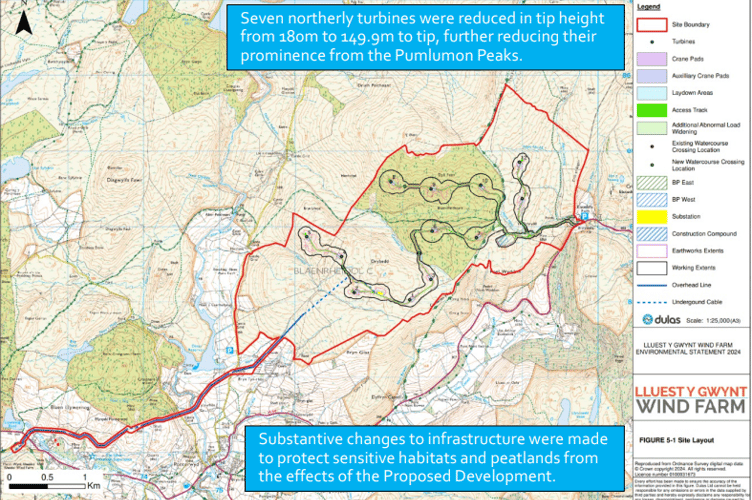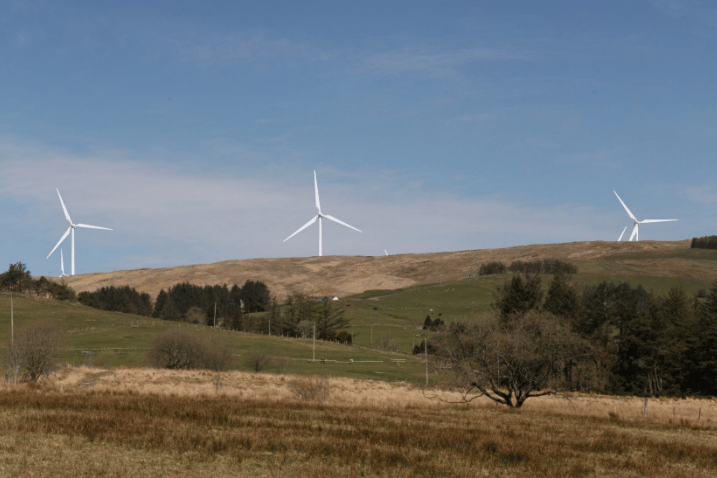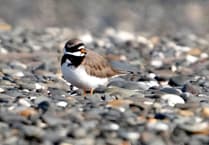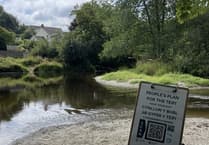A scientist has responded to his paper being misappropriated by activists against an Aberystwyth wind farm.
Prof Gordon Watson’s University of Portsmouth study examined the polluting technology used to stop seawater from eroding off-shore wind turbines.
However his study published only last month has been inadvertently adopted by activists who previously claimed a proposed wind farm would “pollute Aberystwyth’s drinking water”.
Amongst other papers including citing an article from the far-right Epoch Times was Prof Watson’s, who calculated that the sacrificial anodes used to stop erosion of turbines in seawater were emitting thousands of tonnes of metals into the ocean each year.
This research is however “irrelevant” to the activists’ concerns over the proposed on-land 12-turbine wind farm near Ponterwyd and Pumlumon Fawr, for which no sacrificial anodes would be used.
Prof Watson said it “never crossed his mind” that his work would be co-opted to argue that on-land wind farms shouldn’t be built.
The marine ecologist said: “I’m 100 per cent for wind farms and expanding renewable energy.
“The consequences of climate change on marine life are stark.
“As a scientist, my job is to write about the facts and scientific truth.
“We’re obviously aware of the things happening in the political space with science being weaponised or misinterpreted to fit agendas.
“This study is irrelevant to on-land wind farms - you do not need sacrificial anodes on on-land turbines.
“It’s another example of how people are taking science and twisting it to fit their own viewpoint.
“It comes back to people being fact-checked, being called out, social media platforms getting rid of their fact-checkers.
“There are solutions to the metal pollution problem for offshore wind farms that do not stop off-shore wind farms from being built.
“We’ve got to have more of them - they do have lots of benefits not least the reduced carbon footprint of energy production.
“There are also potential co-benefits of growing kelp, mussels or oysters within offshore wind farms as a managed space.”

The Lluest y Gwynt Wind Farm by Statkraft and Eco2 proposed in 2020 would install 180m tall turbines, producing energy for up to 33,000 homes with a 15km benefit zone surrounding the site.
Sally George, a Llawrylglyn activist and coordinator of Protect Glaslyn and Hafren group, is concerned the wind farm is in an “ecologically sensitive area” close to Pumlumon Peat Project and major Rheidol tributaries, adding: “The giant blades would be 70m long and include micro-plastics and toxins that could threaten the freshwater supply to Aberystwyth.”
She added her views “don’t necessarily represent” the group.
However multiple fact-checking organisations have debunked these claims, stating blade erosion rates have not only been exaggerated but massively vary depending climate.
Crucially, despite Prof Watson’s damning research, he is adamant that his research should not stop wind farm development - this he recognises actually needs to increase - but that different less polluting anti-corrosion systems need to be adopted.
The study shows the amount of metals being emitted into the ocean - but it doesn’t look at how long the metals linger close to the site or where the metals are absorbed by sediment and therefore the organisms that live in it.
This is something Prof Watson would like to look at with the renewable energy industry, especially if proposals to plant kelp, oyster or mussel farms intended for human consumption around turbine sites are to go ahead, as companies like Amazon are looking to do.
Thanks to his research, Prof Watson is now also on a number of international councils for the exploitation of seas, looking at a massive review into the impact of offshore wind farms.

He says there has been “no mention” of micro-plastics falling off turbine blades on these councils.
On 4 February he sat on a call with 40-odd experts of industry from across Europe: “No one was speaking about microplastics falling off turbine blades in the offshore wind farm space.
“Arguably offshore wind would be stronger, there would be harsher erosive elements such as salt spray that would make it a more challenging environment.
“You would want to minimise the maintenance regime as offshore wind farms are hard to get to so would want to make the blades as robust as possible.”
On microplastic erosion, Tom Walker, Head of Wind for Statkraft planning the Ponterwyd development with Eco2, had this comment: “We would like to thank members of the local community for engaging with us on our proposals.
“If consented, Lluest y Gwynt Wind Farm would make a significant contribution towards the Welsh Government’s target of having 100 per cent renewable electricity by 2035.”
Victoria Plageman, Project Manager for Eco2, said: “We are really pleased to have presented our plans at the recent consultation.
“Eco2 has a strong record of successfully developing wind farms including Mynydd y Betws Wind farm near Ammanford.
“Not only will this project assist in the transition to a carbon-free future, but it will also have tangible local benefits including the opportunity for local ownership and a Community Benefit Fund.”





Comments
This article has no comments yet. Be the first to leave a comment.